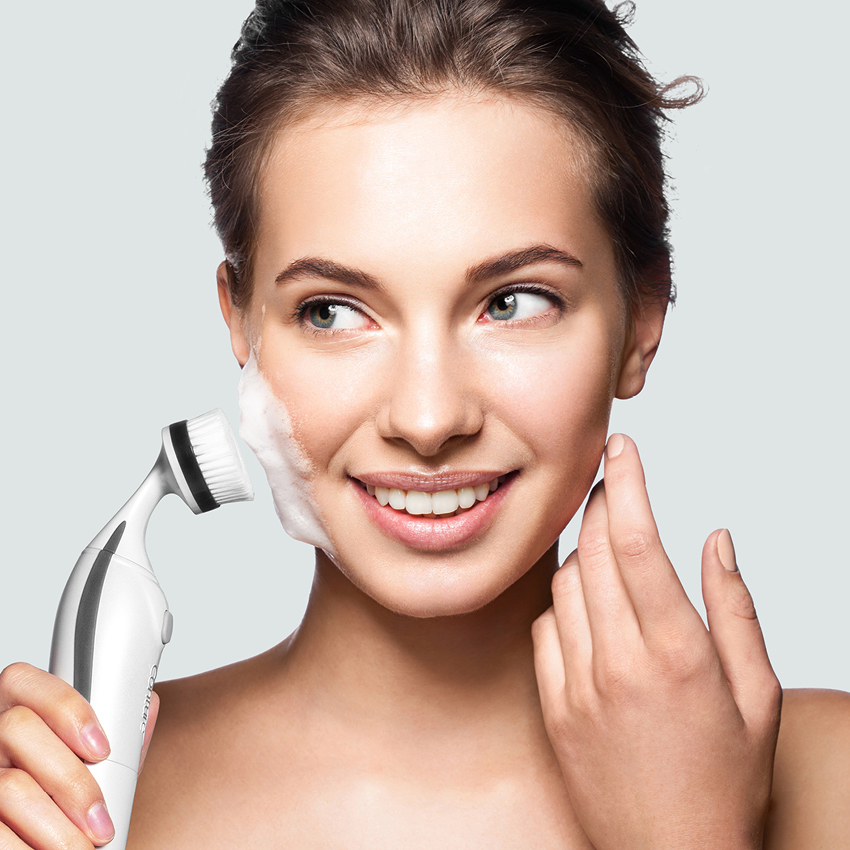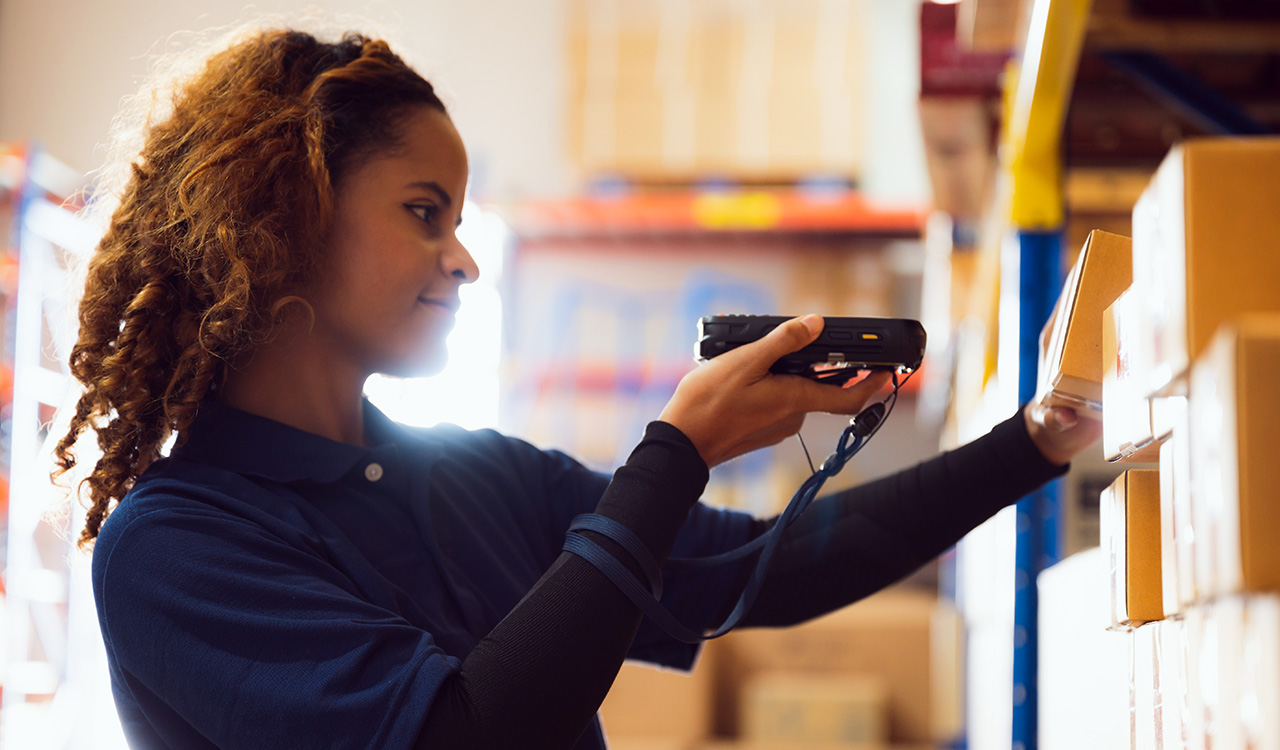You gotta hand it to L\’Oréal for sheer transparency. In the wake of its mid-July announcement that it was pulling the plug on Clarisonic, it immediately began a digital fire sale, offloading all the iterations of the once-untouchable sonic cleansing brush on its website at a deep discount, along with the replacement heads and companion skincare.
By August, the cyber shelves were wiped clean. \”We are completely sold out on Clarisonic.com and the sale has now ended,\” reads a notice on the brand\’s home page. \”Our sale continues in stores, so shop your local Ulta Beauty and Sephora stores for more great deals.\”
[callout]“We rapid-prototype everything here. We have 3-D printers, we have laser cutters, we have these really cool labs. And sometimes we just take clay and shape it. Because we’re direct to consumer, we take all the info about everything that’s annoying customers in their beauty lives, and we start throwing darts at the wall.”[/callout]
For any fans who were clueless about Clarisonic\’s departure from the skincare device arena, there\’s also this no-way-to-miss-it statement: \”Clarisonic is shutting down on September 30, 2020. Please visit our FAQ page for more information about the brand closure.\”
While I\’m sure wobbly brands quietly pull the plug every day, in all my years of covering the beauty beat, I can\’t remember one that did so as publicly and intentionally. That FAQ page Clarisonic refers to? It\’s jam-packed with helpful info for device-purchasers to move forward into a Clarisonic-less future. All in all, it\’s a classy handling of what I\’m sure was an exceedingly tough business decision.
Enter the Upstart Cleansing Brush
In a stroke of pure kismet, L\’Oréal broke the news of its plans for Clarisonic a day before a shiny new competitor – the Conture AeroCleanse – was being unveiled to the beauty press. The Conture team, led by Global Vice President of Marketing & Product Development Andrew Videira – was all set to put on the boxing gloves and trot out its clinical data proving the AeroCleanse out-performed Clarisonic when – poof! – no more Clarisonic.
As a graduate of FIT\’s Cosmetics and Fragrance Marketing & Management master\’s degree program, and a frequent lecturer for the school, Videira admits he\’d gotten a heads up from his industry pals that big changes, including possible brand closures, were imminent at L\’Oréal. And as a veteran of another beauty behemoth – Beiersdorf – he\’s well aware that it\’s standard practice to unload brands that don\’t align with a corporation\’s core competencies and direction in which it wants to head.
Read: As dominant as they are in the overall beauty category, tech-driven skincare gadgets aren\’t L\’Oréal\’s forté.
Despite his connections, Videira says he was caught off-guard by the announcement, and wonders why L\’Oréal didn\’t try to sell Clarisonic rather than shutter it outright. \”I was actually a little shocked,\” he says. \”Because even though the [cleansing device] category is in decline, it\’s still massive. So by no means was Clarisonic losing any money. It was just a strategic move. When you\’re a big corporation, and you have shareholders, you\’ve got to report to a board.\”
Guess who doesn\’t have to report to a board? Videira.
From Whence AeroCleanse Came
Before we dive into what separates AeroCleanse from the rest of the cleansing device pack (spoiler alert: it\’s air hockey technology), I thought I\’d impart a bit of background intel on Luminess Direct, LLC, the privately held, Stafford, Texas-based parent company of Conture, the brand launching the cleansing device.
Flying under the radar as a strictly DTC play, Luminess was founded in the late 1990s by Sean Mehta, who originally hails from the garment industry and now calls himself Chief Beauty Innovator. Back in his fashion days, Mehta watched as the makeup artists he hired for catalog shoots invariably used airbrush techniques on the models. This led to an aha moment: Why not bring an affordable – and portable – version of airbrush technology to \”real\” women? Voilà – Luminess Air Silk Airbrush Cosmetics, a system for dispensing foundation that\’s available in multiple shades and is advertised heavily on TV.
Emboldened by the success of Luminess Air, Mehta and crew took the leap into skincare six years ago with the creation of the Conture brand. The first product off the assembly line was the Kinetic Skin Toning Device, $99, which borrows from the ancient ritual of cupping to gently suction, ostensibly lifting and firming. Next up was the Kinetic Smooth Hair Remover and Skin Polisher. Priced at $49, it undoubtedly attracted customers who balked at shelling out $150+ for pricier shaving gadgets like Dermaflash.
\”We\’ve always been focused on taking categories that…I hate to say it like this…consumers just settle with, and flipping them on their heads,\” says Videira. \”So, with Luminess, that was foundation application. Sean said, \’There\’s a better way, and we should be providing that.\’ And we\’re still striving. Years later, we\’re in development with a system that\’s even easier to use. Our goal is to eventually develop a system that\’s cheap enough, and easy enough, that it\’s a no-brainer for everyone.\”
Not that Luminess is all gadgets; in 2019, it had a massive hit with its collaboration between celebrity makeup artist Sir John and Disney on a limited-edition Lion King collection. Upscale and beautifully crafted, Sir John x Luminess sold out quickly, scoring a staggering 1.9 billion media impressions in the process.
Building a Better Cleansing-Device Mousetrap
Perhaps because he logged so many years at bureaucratic Beiersdorf as head of marketing for Eucerin and Aquaphor, where he was lucky to see a handful of products in development at the same time, Videira sounds positively giddy at the speed with which Luminess brings ideas to market.
\”At any given time, we have somewhere around 150 active projects,\” Videira notes. \”We rapid-prototype everything here. We have 3-D printers, we have laser cutters, we have these really cool labs. And sometimes we just take clay and shape it. Because we\’re direct to consumer, we take all the info about everything that\’s annoying customers in their beauty lives, and we start throwing darts at the wall.\”
In the case of the AeroCleanse, those darts started being thrown almost three years ago. With the goal of removing the number one pet peeve consumers and dermatologists have with sonic cleansing devices – that they can irritate the skin – Videira says the team began researching the concept of friction. Immediately, air hockey surfaced.
When you think of it, that makes perfect sense. An air hockey puck just glides over the table, supported by pockets of air. Since Luminess already had expertise in all things air, it wasn\’t a huge leap to harness some of that technology for the AeroCleanse. This \”pulsating airflow\” causes even a tiny drop of cleanser to suds like crazy, which leads to less aggressive pushing into the skin by the user. (Fact: consumers need to see suds to feel like their skin is getting clean.)
Another standout feature of the AeroCleanse is its oval brush, which enables users to angle the head close to the nose, an area prone to dirt-accumulation. And for anyone who\’s plunked down serious coin for lithium battery-based beauty devices that conk out after a couple of years, the fact that the AeroCleanse is powered by good old-fashioned triple-A batteries is another check in the plus column.
Of course, in a year that has produced major economic woes for many a household, the device\’s $99 price tag doesn\’t hurt either. \”These are no longer the days when Clarisonics are selling for $300,\” says Videira. \”We had to regain consumer trust, and we\’ve always said that beauty should be accessible.\”
The Major Takeaways
More than just an intriguing story, the Clarisonic vs. Conture tale yields insights for any brand interested in pursuing the notoriously tricky beauty device category.
- Pull technology inspiration from other industries. Now that the beauty device category is mature, it\’s harder than ever to surface a genuinely new idea. Expand your competitive research horizons to technology fields that have zero to do with the cosmetic arena. Seriously, air hockey? Not exactly the first thing that springs to mind when you think of skincare.
- Don\’t fear an old-school feature. While Conture\’s decision to make the AeroCleanse operable with traditional batteries initially felt like a step backward, Videira said he\’d watched far too many lithium-powered devices essentially go dead after too much time in the supply chain before reaching consumers. Combining high-tech and low-tech features can both deliver a truly innovative product as well as drive the cost down.
- Make compliance the number one goal. Gadgets don\’t work if they\’re gathering dust in a bathroom cabinet, so invest extra time, energy and research bucks into developing the easiest, most comfortable user experience possible. Think: How can we make deploying this device the best part of a consumer\’s day?
- Consider launching a less pricey iteration first. While the industry norm in the device category is to launch a costly premium version followed by cheaper iterations, Conture is flipping that script with the AeroCleanse. Expect to see a pricier version of the airflow-driven cleansing tool in the near future.
- Fail fast, fail early. A mantra of Silicon Valley, the notion that it\’s okay to take a flyer on a product launch is atypical in the beauty device arena. But for DTC brands in particular, this can be the path to a breakthrough product the consumer genuinely loves.




